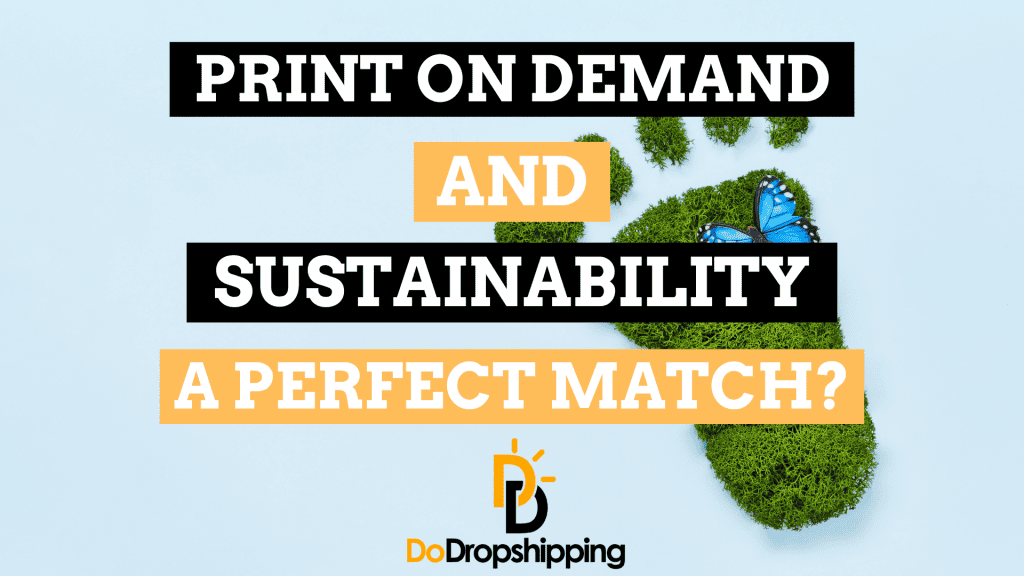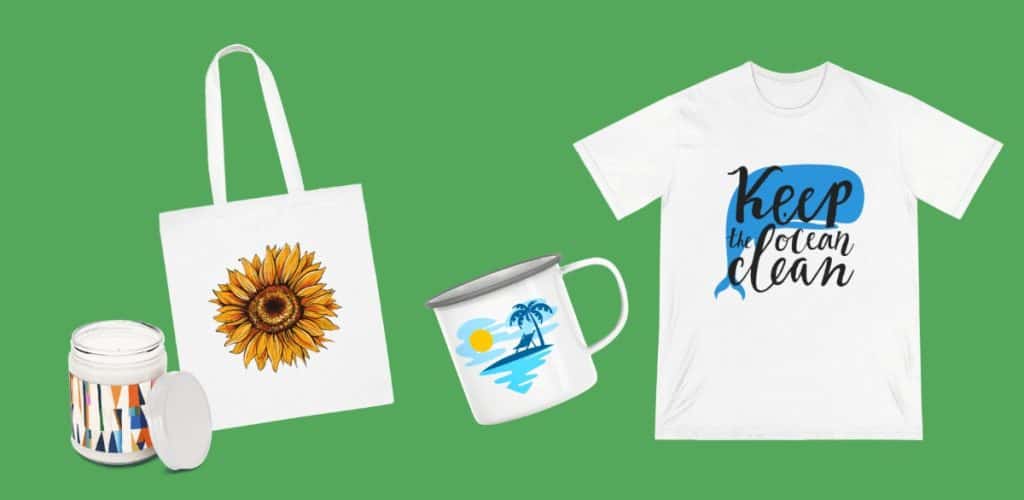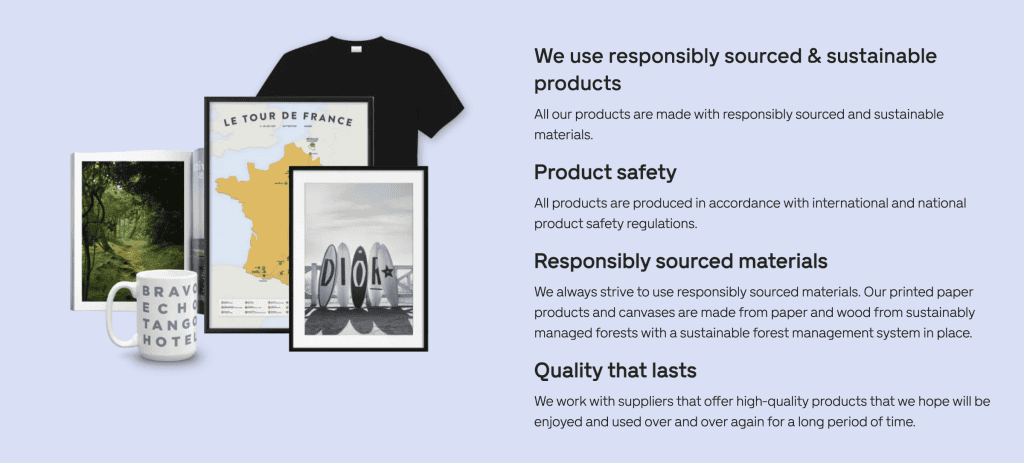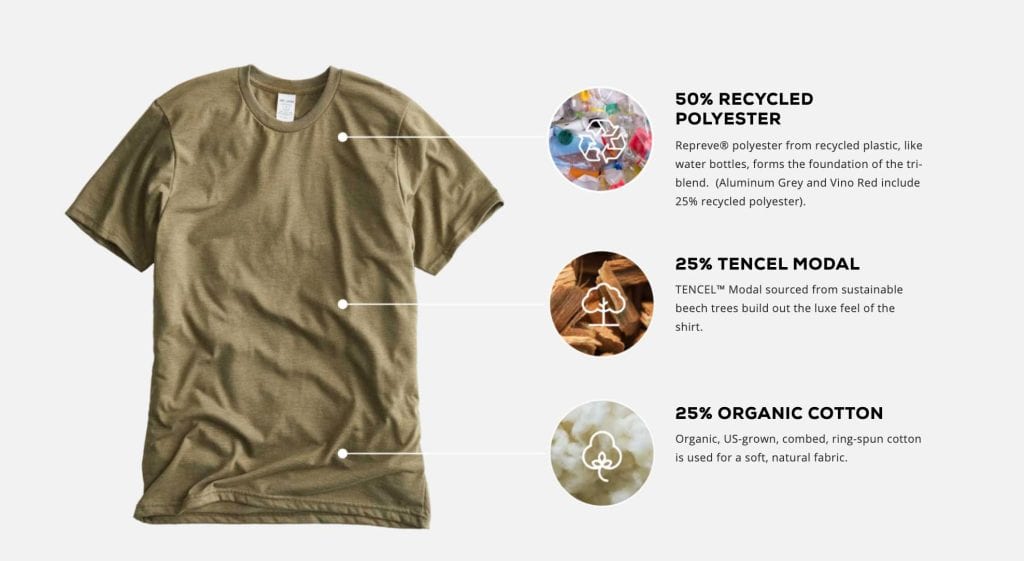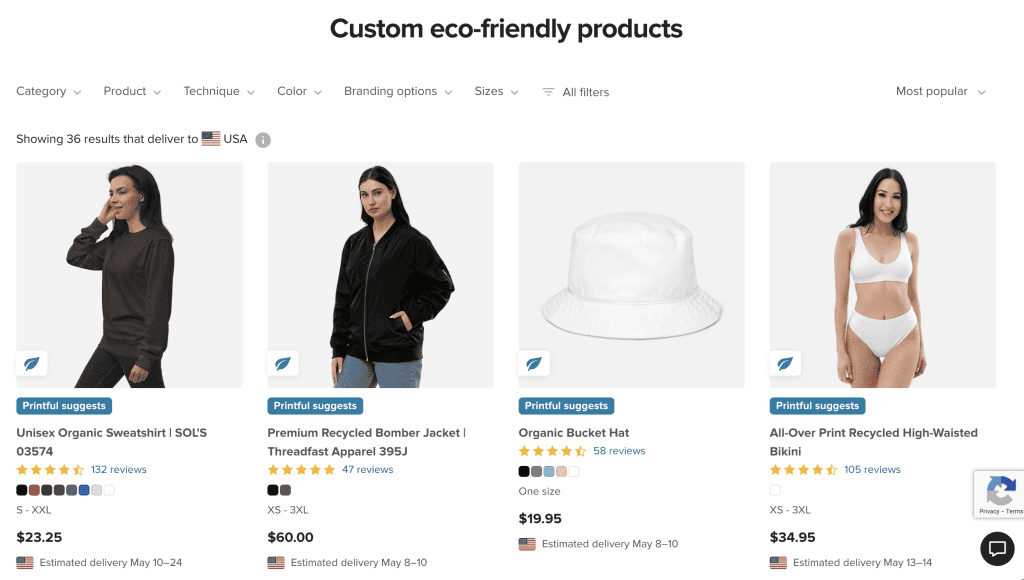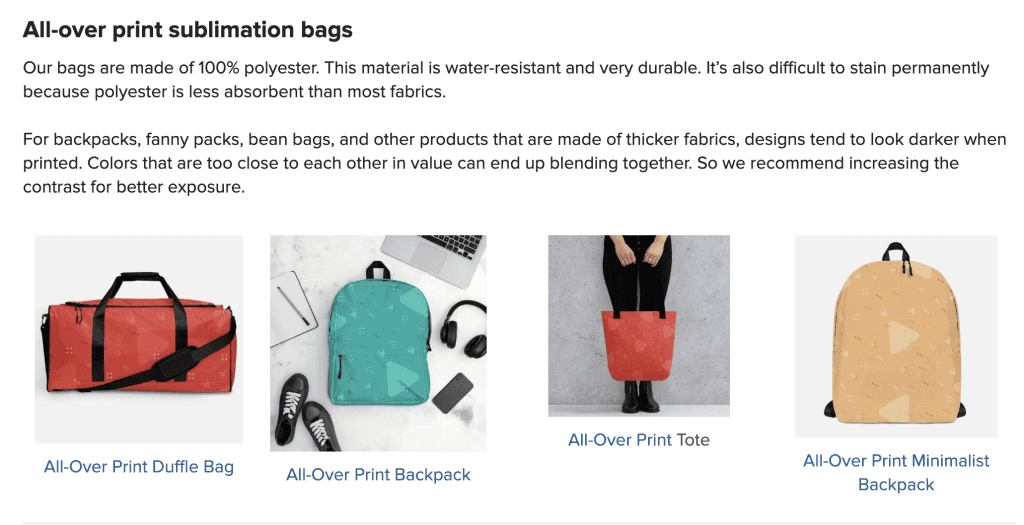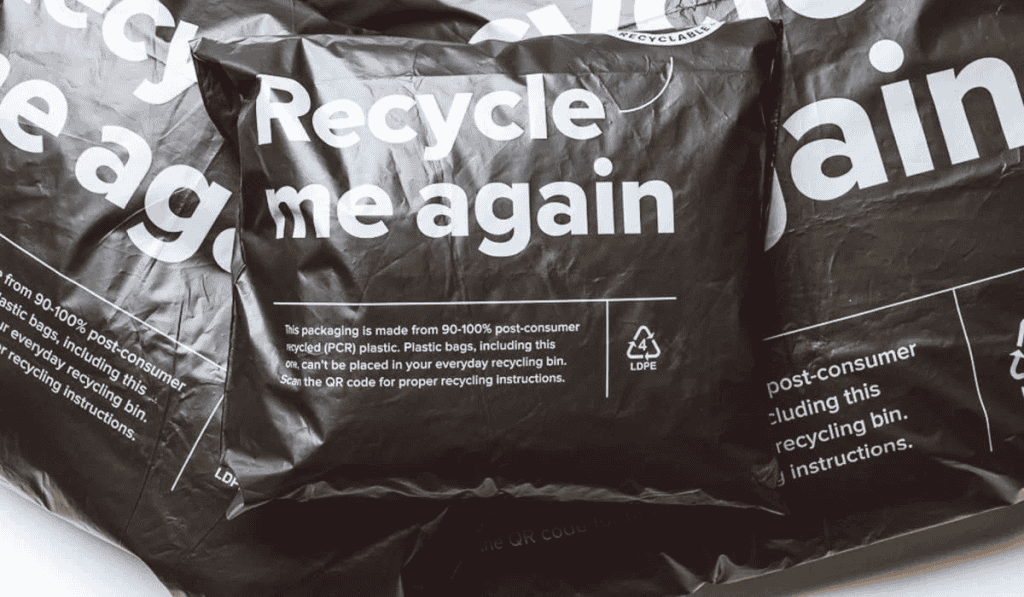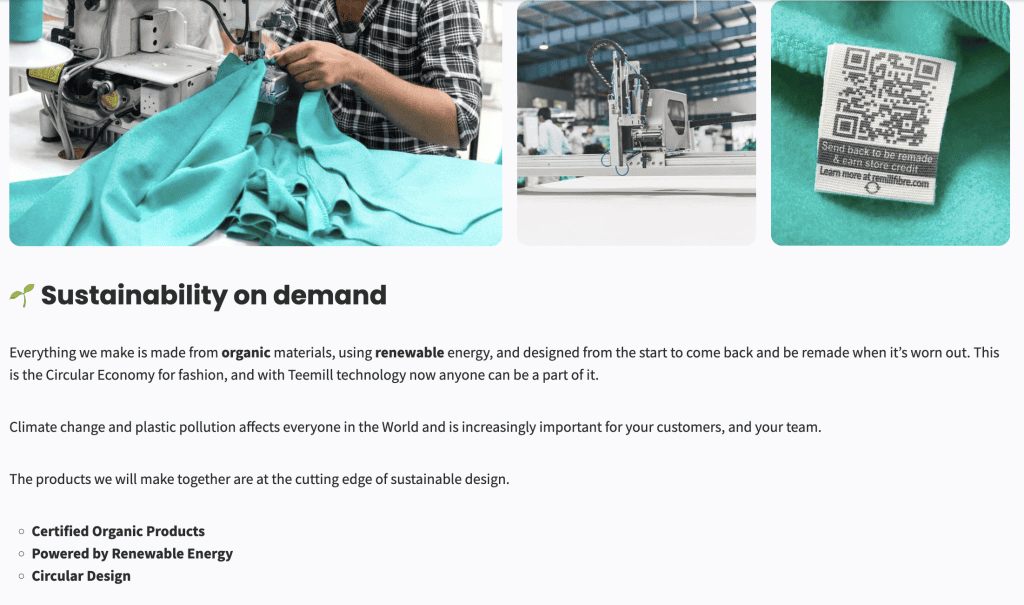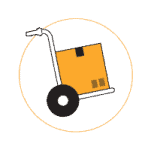The traditional retail system often results in excess inventory and creates unnecessary waste, which is harmful to the environment.
As customers become increasingly eco-conscious, going green is crucial for both the planet and your business.
Surprisingly, 80% of customers are willing to pay more for eco-friendly products!
Print on demand (POD) meets this need by only making what you sell, reducing waste, and showing your brand cares about sustainability.
But is print on demand truly sustainable? Is it better than traditional printing?
Let’s address this question head-on.
Is print on demand sustainable?
POD is becoming more eco-friendly than ever before!
Suppliers are now using greener printing methods and better ways to ship products, which cuts down on environmental impact.
Let's look at the ways POD is making a difference:
1. Eco-efficient production
Traditional manufacturing often results in environmental issues like high energy use and product waste.
POD helps solve these problems by only making products when someone orders them. This approach reduces unnecessary production and the environmental issues that come with it.
Of course, POD isn't perfect for the environment. The materials, inks, and printing can leave environmental footprints.
But the good news is that more and more POD suppliers are investing in sustainable materials and technologies, which we'll cover later!
2. Waste reduction
POD's on-demand fulfillment model drastically cuts down on material waste.
Suppliers also focus on quality control to reduce the need for reprints, which helps save more materials.
For example, using recycled polyester in production consumes 45% less energy compared to using virgin polyester, as reported by the Textile Exchange.
3. Low returns
POD reduces return rates because items are printed based on customer demand.
On the other hand, traditional manufacturing often overproduces, producing surplus stock that can be defective or unsellable.
POD avoids this issue by ensuring that each item meets specific customer preferences, reducing dissatisfaction and returns.
Your customers are more likely to receive a product that matches what they thought they ordered, which reduces the number of returns.
4. Less storage space needed
POD operates without the need for large inventory stocks, using storage space only for ordered items.
In contrast, traditional inventory models require massive warehouses to store unsold products, leading to high maintenance costs and energy consumption.
Challenges in achieving sustainability with print on demand
While suppliers are doing their part to become more eco-friendly, not all are, and it's on you to take the necessary steps to go green for your POD store as well.
Here are some of the challenges you could be facing:
Materials and ink issues
POD suppliers often use materials and chemical-based inks, which can harm the environment.
However, many suppliers are shifting towards organic or recycled materials to lessen this impact.
To make your POD store more sustainable, select suppliers prioritizing eco-friendly practices, such as TPOP, Shirtigio, or Printful.
Educating yourself about the materials and inks used in your products is also helpful.
You can usually find this information on the supplier's customer support pages.
Packaging challenges
POD packaging has relied heavily on plastics and non-recyclable materials.
However, a growing movement is towards using recycled and biodegradable packaging options.
You can ask your POD supplier if they use recycled or biodegradable packaging. Some suppliers will also give you tips on properly disposing of their packaging!
Best sustainable print on demand suppliers
Here are some POD suppliers that specialize in sustainability:
1. Gelato
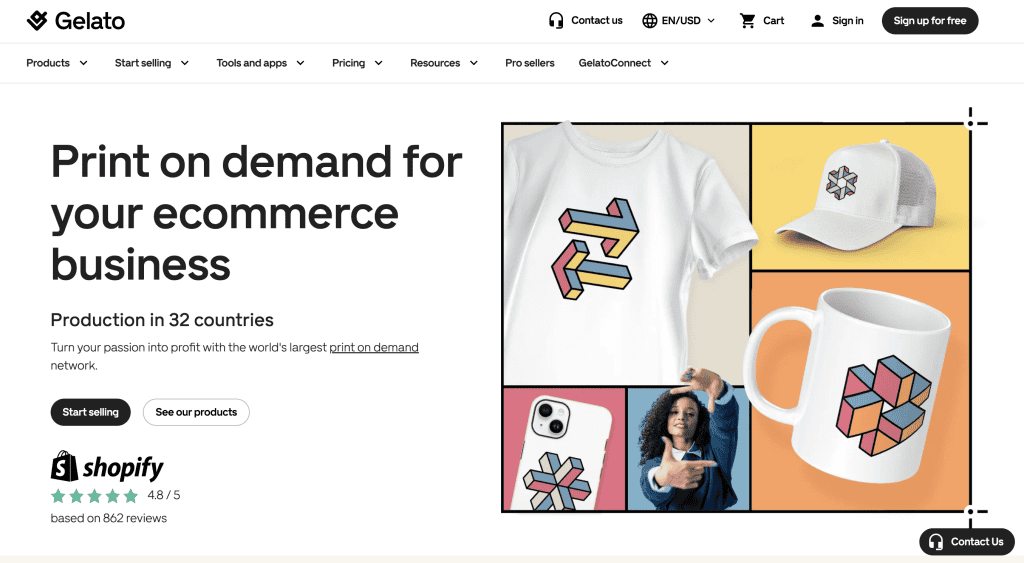
Gelato is a global print on demand platform focused on sustainability. They fulfill 90% of orders locally, reducing shipping distances and carbon emissions.
Gelato offers eco-friendly products, including organic apparel, tote bags, and FSC-certified paper products.
Their commitment to local production and sustainable materials makes them a top choice for environmentally conscious businesses.
2. TPOP

TPOP is a European print on demand platform that focuses on eco-friendly practices by using water-based inks free of harmful chemicals and offering products made from organic cotton or recycled materials.
They also focus on sustainable packaging by using recyclable cardboard and biodegradable shipping bags, making them one of the biggest suppliers for sustainability.
3. Printful
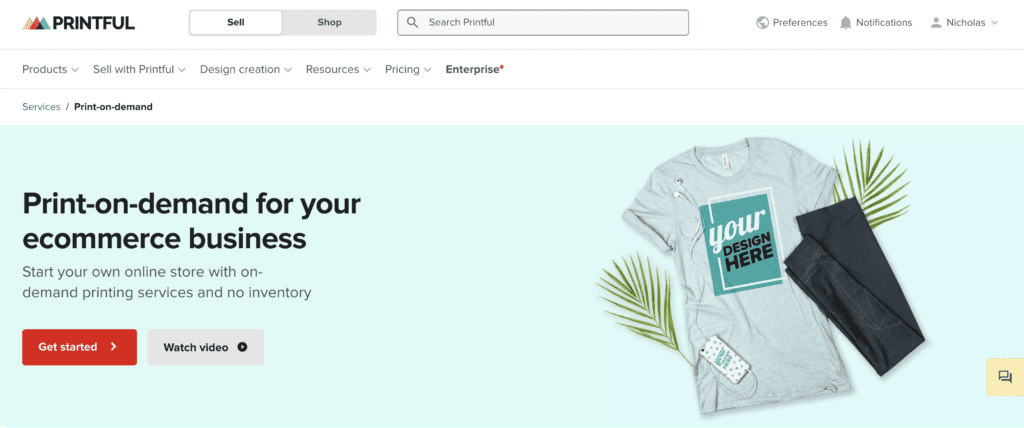
Printful is dedicated to sustainability by sourcing eco-friendly products like organic cotton apparel.
Their advanced printing technology reduces waste, and they have fulfillment centers strategically located to minimize shipping distances.
Printful also offers a recycling program for defective items, keeping them out of landfills!
4. Shirtigo
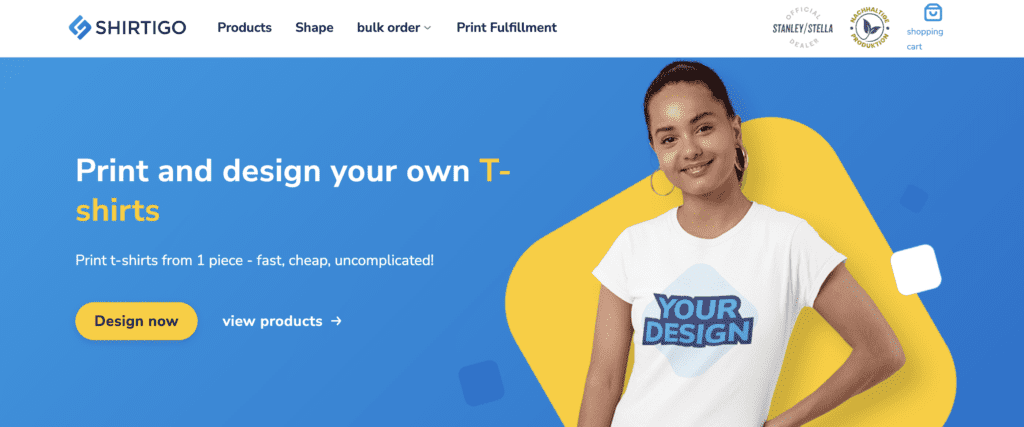
Shirtigo is a German-owned company that supports sustainability by avoiding overproduction and waste.
They also use certified organic textiles and water-based inks to create eco-friendly apparel and minimalistic and recyclable packaging.
Here are some strategies for creating eco-friendly print on demand products!
1. Use eco-friendly materials
Find a supplier that uses organic cotton, bamboo, and recycled polyester, which require less water and energy and are free from harmful chemicals.
These organic materials, like the Global Organic Textile Standard (GOTS), typically hold certifications.
Plus, while they match the quality of traditional materials, they provide a unique texture and feel.
If you want to use eco-friendly materials, you can also look into Patagonia's approach for inspiration!
They use organic cotton and recycled polyester in their clothing lines, which reduces their environmental footprint and improves their brand reputation among eco-conscious consumers.
Similarly, Printful offers a range of eco-friendly products that include organic cotton options:
2. Choose advanced printing technologies
Switching to advanced printing technologies can significantly lower the environmental impact of POD products!
For instance, Bella+Canvas, available through Printful, uses dye-sublimation for vibrant prints that last longer and require less water and energy.
This process reduces waste and improves product durability, demonstrating how technological advancements can meet sustainability goals.
3. Use better packaging options
Switch to sustainable packaging options to reduce your ecological footprint further.
Companies like No Issue provide eco-friendly packaging solutions that are both functional and attractive.
Sustainable packaging not only uses fewer resources and is easier to dispose of but also aligns with the expectations of customers preferring eco-friendly products.
The best way to switch to greener packaging is to look for a POD supplier that offers it. While some may charge more, the long-term benefits and customer loyalty can outweigh the initial costs.
4. Use renewable energy
While setting up renewable energy directly might be tough, you can partner with POD suppliers that invest in these energy sources.
For instance, Teemill powers its operations mainly with solar energy, significantly reducing carbon emissions.
How can you engage customers using sustainability?
Now that we have your supplier, it's time to get your customers involved in your green efforts:
1. Educate customers
It's important to let customers know why sustainability matters.
As mentioned, many consumers are willing to pay more for sustainable brands.
You can use clear descriptions on your products and your website’s 'About Us' page to inform them about your eco-friendly practices.
2. Use marketing to promote sustainability
Customers love clear and honest communication; incorporating this into your marketing can pay off!
When you promote your products, highlight the use of eco-friendly materials. Explain the benefits—not just for the planet but also for your customers' well-being.
Let them know how choosing these products can positively impact their health and the environment. This way, they will feel good about going green.
3. Encourage customer participation
Getting customers involved in sustainability can be fun and engaging.
Use your product labels, contests, and social media to teach them about the benefits of sustainable resources.
For example, you could run a contest asking customers to devise ways to reuse your product packaging, offering prizes like discounts or special offers for the best ideas.
Summary
Before we go to the conclusion, we've created a quick summary of this article for you, so you can easily remember it:
- Choose eco-friendly materials like organic cotton, bamboo, and recycled polyester for your POD products, which use less water and energy.
- Try out advanced printing technologies that are less harmful to the environment, such as dye-sublimation and water-based inks, which are also more durable.
- Select print on demand suppliers who prioritize sustainable practices and can provide a high-quality, eco-friendly customer experience.
- Using recyclable and biodegradable materials in packaging to reduce the environmental impact.
- Use renewable energy solutions, such as solar or wind power, in your operations to decrease dependency on fossil fuels and reduce your carbon footprint.
- Help your customers in your sustainability efforts by educating them about the benefits of eco-friendly products.
Conclusion
While traditional printing excels in high-volume production, print on demand is ideal for small businesses.
It minimizes upfront costs, reduces waste, and quickly adapts to shifting customer preferences.
By using eco-friendly materials and advanced printing technologies and working with suppliers committed to renewable energy, POD can help your business reduce its environmental footprint.
This combination aligns with sustainability goals while meeting customer demands for greener products, making POD and sustainability a perfect match.
Thank you for reading, and have a great day!
Want to learn more about POD?
Ready to move your print on demand store to the next level? Check out the articles below:
- 13 Best Eco-Friendly Print on Demand Suppliers in 2024
- 10 Best Print on Demand Tools for Your Business in 2024
- Enhancing Your POD Business: The Power of Branded Packaging
Plus, don’t forget to check out our in-depth how to start a print on demand business guide here!

